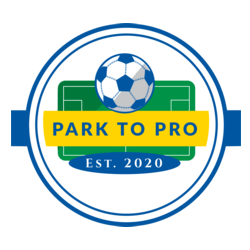Sometimes as a coach, you’ll hit a ‘brick wall’ and feel that you are well and truly stuck. Within these moments, you may question what you’ve been doing or what new direction you may attempt to take. When it comes to the topic of your training session, this may well be the case. Your football library might not be very vast, which means you could struggle to design something that will engage and most importantly, improve.
Within these moments it is very much a case of, “you don’t know, what you don’t know”, so how could you get that light bulb moment, that could create new ideas? Here, I list a few things you could try;
Read, read, read – If you have the time, reading is an extremely powerful tool that you can use, to improve your football library. While there is a lot of subjective application guides, you can take what you see and theorise the situation. Could it work in your circumstances or environment? If not, why? If you don’t have time to read, try and create it….
YouTube – Again, this is another situation similar to the above, so if used correctly, it could help you. There are hundreds of thousands of different videos, clips and interviews that could possibly inspire you to try something out. Beware that this ‘quick fix’, shouldn’t be abused though, as there will be a lot of subjective application available.
Watch a game – When watching professional matches, you are given immediate access to football actions, that are executed at a high speed, with less space/time. By seeing what the professionals do, it should enable you to understand the situations that your players could also find themselves in. While an under 7’s environment is completely different to that of Barcelona, a pass is still pass….
Mind map – One of the most useful tools for retaining information, is that of a mind map. You can label the middle with the topic you wish to explore, along with a visual. This will help your brain promote certain ideas, by visualising and detailing what you see. Around the map, ask yourself questions such as – WHERE does it happen on the pitch? WHO is involved? WHAT are the key playing positions? WHEN does it happen? By using these questions, you could write down key words that are associated with the theme you’re exploring.
Football actions – You are coaching a sport called football, so all of the actions that are executed should be in that context. Next, you can list what actions the players in that scenario are doing or should be doing. This can then lead you into a situation, where you could visualise what you want and how (possibly) the players could do it.
Network and ask questions – There is always an opportunity to learn, whether that be reading, watching or listening. Networking with other like minded coaches, could enable you to discuss what they have done previously, or how they execute their own coaching actions, within their environment. By building a larger network, you will have more opportunities to discuss and possibly more opportunities to learn.
Log and file your training sessions – While there are many online tools, you could also use old fashioned methods, such as files and plastic wallets to store your sessions. By doing this, you could organise them into certain parts of the game and then go over them at a later date. By reflecting and evaluating, you could create new pops which we discussed in last weeks blog post.
Coming up with new ideas, is extremely hard and challenging at the best of times. But, by zooming out and using some of the more simpler ideas, you won’t be far off in creating a scenario that players could thrive under. In a worst case scenario, you can always stick to what you know (the game) and coach within it. Players will understand the game, it will be quick and easy to get started, and you’ll be sure that it’ll have unpredictability from the first whistle.
Don’t over complicate your ideas or worry too much… sometimes simple is best!


